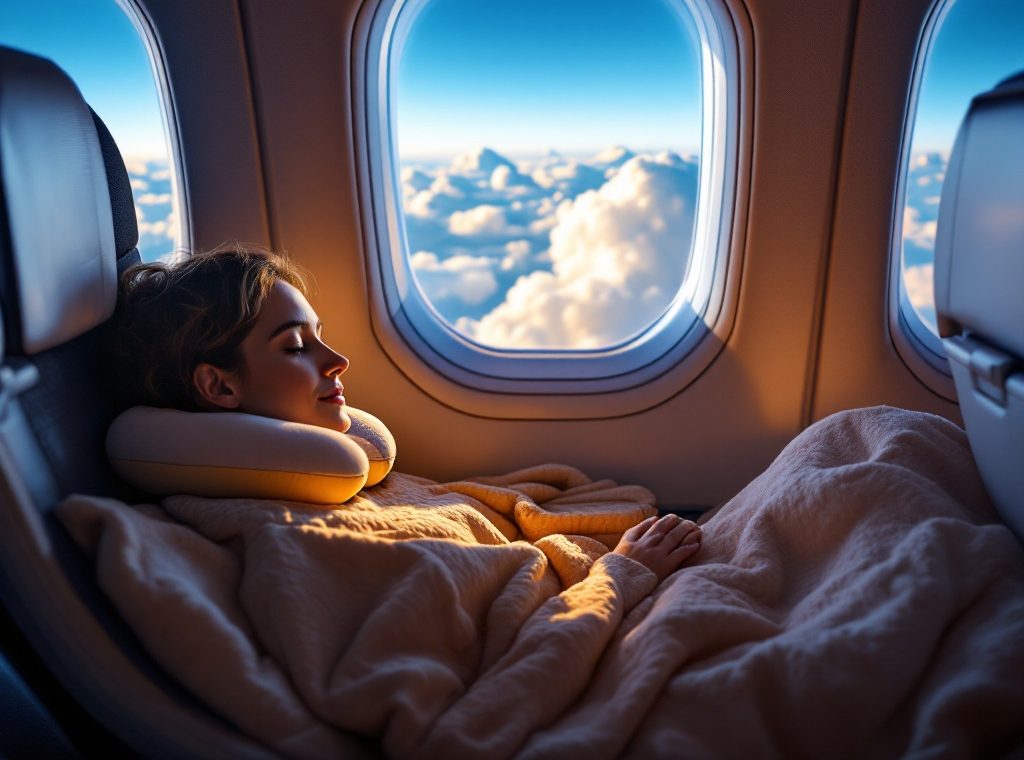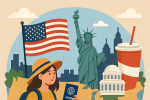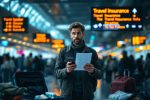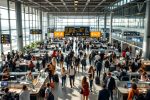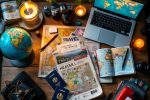Preparing for Long-Haul Flights: Essential Tips
Dreading that upcoming long-haul flight? Discover how to transform your journey from a stressful ordeal into a comfortable experience. Learn how strategic booking and packing can significantly improve your comfort, from securing the best seat (it might be at the back!) to packing a smart “Oh Shit” kit for unexpected issues. Explore expert tips on combating jet lag, staying hydrated, and creating your own in-flight relaxation oasis. Ready to enjoy your next long flight? Read on to unlock the secrets to a smoother, more enjoyable travel experience.
Important information
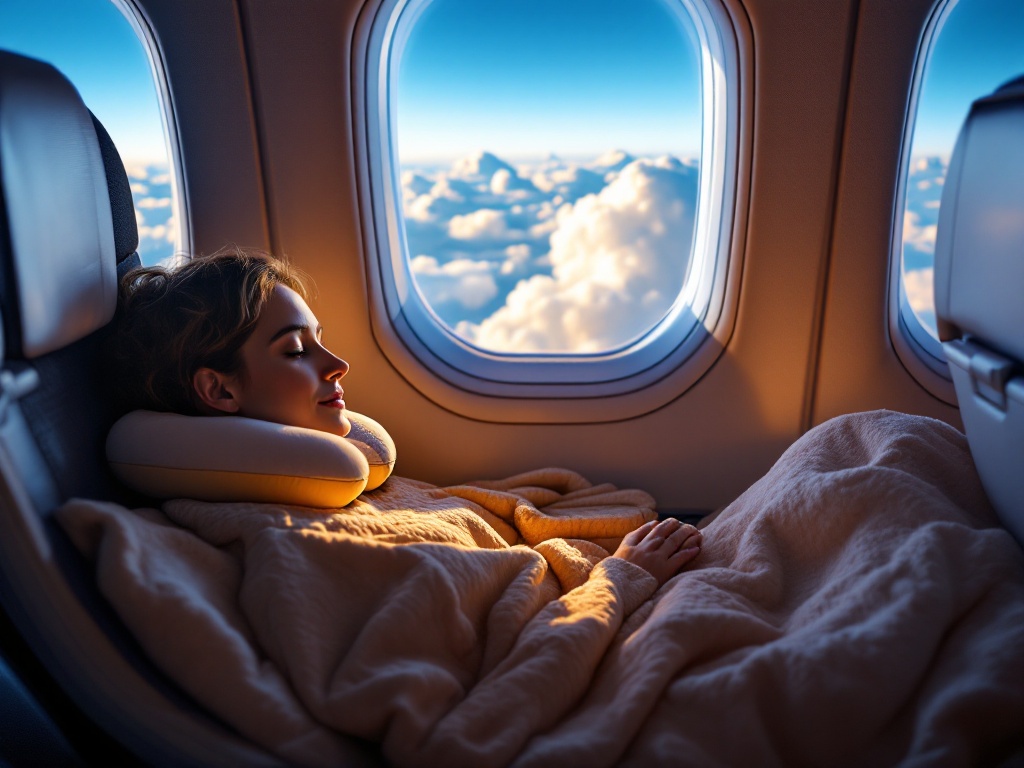
- Book your flights early to secure preferred seats and potentially extra legroom. Consider the back of the plane for a chance at empty seats nearby.
- Check in online early to save time, avoid airport stress, and possibly snag a better seat.
- Pack healthy snacks, an eye mask, earbuds, and essential toiletries for better comfort and rest during the flight.
- Wear comfortable, loose-fitting clothes in layers and supportive shoes. Compression socks can help with circulation and swelling.
- Stay hydrated by drinking plenty of water, move around the cabin, and practice relaxation techniques to minimize jet lag and anxiety.
Booking and Preparing for Your Long-Haul Flight
Booking your flight early can significantly enhance your long-haul comfort, especially if you secure a preferred seat. While popular choices exist, the back of the plane often presents surprising benefits. Furthermore, checking in early simplifies your airport experience, minimizing stress and ensuring a smoother start to your journey.
Book Your Flight Early for Better Seat Options
Secure your preferred seat by booking your flight early. A window seat provides breathtaking views, while an aisle seat offers convenient access to restrooms and additional legroom. Early booking often unlocks seats with extra legroom, a significant comfort advantage, especially on long-haul flights. This is a major benefit for taller passengers or those who value extra space. Booking in advance increases your chances of sitting together with your travel companions. Traveling with friends or family? Book early to ensure you can all enjoy the flight together.
Consider Seat Selection: Benefits of the Back of the Plane
While back-row seats are often less desirable, their unpopularity offers advantages. Empty neighboring seats provide extra space and minimize interruptions. Furthermore, boarding last shortens your pre-flight wait, meaning less time spent onboard before takeoff. This perk can enhance your travel experience by:
- offering potential for extra space,
- minimizing interruptions, and
- reducing pre-flight waiting time.
Early Check-In to Avoid Airport Stress
Save time and stress by checking in online a day before your flight. Most airlines offer this convenient feature, allowing you to select your preferred seat and bypass lengthy airport queues. With early check-in, you can proceed directly to security and then to your gate. Here’s how online check-in benefits you:
- Time-saving convenience: avoid long lines at the airport, especially during peak travel periods.
- Seat selection advantage: secure your preferred seat, whether it’s an aisle, window, or seat with extra legroom.
- Reduced airport stress: enjoy a smoother, less hurried airport experience.
- Early gate access: proceed directly to security and your gate, giving you extra time to relax or grab a coffee.
Packing Essentials for Long-Haul Flights
Maintain your energy during travel by packing healthy snacks.
For better sleep during your flight, pack an eye mask and earbuds.
An essential emergency kit should include over-the-counter medications and personal hygiene items.
This “Oh Shit” kit addresses unexpected problems.
Snacks Packing: Bring Snacks from Home
Save money and satisfy your cravings by packing your own snacks. This ensures you’ll have something enjoyable to eat, especially important for those with dietary restrictions. Airport and airplane snacks are notoriously pricey.
Recommended Snack Options:
- Nuts,
- Trail mix,
- Dried fruit,
- Granola bars,
- Whole-grain crackers.
Fresh Fruit Considerations:
While fresh fruit like apples and bananas can be refreshing, check airline regulations beforehand, as some restrict fresh produce.
Pack an ‘Oh Shit’ Kit with OTCs and Personal Hygiene Items
Pack a small bag with essential items to make your journey more pleasant. Include over-the-counter remedies like pain relievers, motion sickness medication, and allergy pills. Personal hygiene items such as hand sanitizer, wet wipes, deodorant, a toothbrush, and toothpaste will also enhance your comfort, particularly on long flights or if your checked luggage is delayed.
Include Sleep Aids: Eyemask and Earbuds
Struggling to sleep on long flights? An eye mask can block out distracting light, while earbuds help muffle cabin noise. Together, these simple tools create a more peaceful atmosphere, promoting restful sleep even on noisy journeys. They’re essential for any traveler.
Eye Mask: Blocks out distracting light, creating a darker environment conducive to sleep.
Earbuds: Help muffle cabin noise and other distractions, promoting a more peaceful atmosphere for rest.
Adjusting Your Routine for a Comfortable Flight
Gradually adjust your sleep schedule by shifting your bedtime and wake-up times by 1-2 hours daily in the days leading up to your departure. This will ease the transition to a new time zone.
Prioritize relaxation before your flight for a more enjoyable travel experience. Techniques like deep breathing or meditation can help manage pre-flight anxiety.
Adjust Your Sleep Pattern to Combat Jet Lag
Start adjusting your sleep schedule a few days before your departure to minimize the effects of the new time zone.
Upon arrival, expose yourself to sunlight to help regulate your body clock naturally.
Stay well-hydrated throughout your trip.
Moderate your intake of caffeine and alcohol.
Short naps can be beneficial for combating jet lag, but avoid oversleeping, as it can disrupt your nighttime sleep and hinder your adjustment.
Pre-Flight Relaxation: De-Stress Before You Board
Manage your pre-flight anxiety with these relaxation techniques:
- Deep breathing exercises can significantly reduce stress hormones like cortisol, promoting calmness and managing flight anxiety.
- Meditation helps lower stress levels and improves your sense of well-being before a flight.
What to Wear: Dressing for Comfort on Long Flights
For a comfortable flight, consider these clothing and footwear tips:
Clothing
Opt for loose, breathable clothing made of natural fabrics like cotton or linen. Cabin temperatures can fluctuate, so layering is key for adapting to these changes. For example, you could wear a t-shirt, a light sweater, and a scarf that can be easily added or removed.
Footwear
Comfortable footwear is essential, as feet tend to swell during air travel. Sneakers, loafers, or slip-ons are excellent choices. For long flights, consider compression socks to minimize swelling and improve circulation by gently compressing your legs and promoting blood flow.
Wear Comfortable Clothing and Layer for Cabin Temperature Changes
For maximum comfort on a long flight, choose loose, breathable clothing.
Smart layering is essential to combat fluctuating cabin temperatures.
And don’t forget supportive shoes for your feet.
Compression Socks to Minimize Swelling and Improve Circulation
Compression socks apply pressure to the legs, promoting blood circulation back to the heart. This helps prevent swelling and the risk of deep vein thrombosis (DVT). Furthermore, compression socks can enhance comfort during long flights by reducing leg fatigue and overall discomfort. They are particularly beneficial for individuals who experience swelling or discomfort in their legs, especially during travel or prolonged standing.
Essential In-Flight Comfort and Entertainment
- For a comfortable long flight, pack both a travel neck pillow and your own pillow.
- Noise-canceling headphones can drastically improve your experience by blocking out ambient airplane sounds.
- Downloading movies and books onto your tablet or phone ensures you’ll have readily available entertainment.
Bring a Travel Neck Pillow and Your Own Pillow for Added Comfort
Enhance your travel comfort by bringing both a neck pillow and your regular pillow. A neck pillow offers essential head and neck support, promoting better sleep and preventing stiffness. Your own pillow adds a familiar, comfortable feel, especially if you prefer a larger or softer option.
Noise Reduction with Noise-Canceling Headphones
Noise-canceling headphones significantly enhance passenger comfort by effectively minimizing airplane noise. This allows travelers to relax, focus on work, or enjoy entertainment such as music, audiobooks, and podcasts. They also create a tranquil environment for light sleepers, enabling them to rest peacefully even amidst the noise of air travel. This is particularly beneficial for those sensitive to loud sounds.
Entertainment Preparation: Download Movies and Books
Download movies, TV shows, podcasts, and audiobooks for offline entertainment.
Offline games and apps also offer amusement.
Fully charge your devices and bring a portable charger.
Consider card games or conversations if traveling with others.
Staying Healthy and Hydrated While Flying
Bring an empty reusable water bottle and fill it after security. Sip water regularly, and limit dehydrating drinks like caffeine and alcohol.
Moving around improves circulation and prevents discomfort. Take walks in the cabin and stretch in your seat every couple of hours.
Don’t forget your skin. Pack a travel-sized moisturizer to combat the dry air.
Hydration Tips: Keep Yourself Properly Hydrated
Staying hydrated during air travel is crucial for your well-being. Bring an empty reusable water bottle and fill it up after security. Limit dehydrating drinks like caffeinated beverages and alcohol, opting for water instead. Set hourly reminders on your phone to ensure regular water intake. Pack hydrating snacks like fruits and vegetables to maintain freshness throughout your flight.
Movement: Get the Blood Circulating to Avoid Discomfort
Shift your position frequently. Regularly changing how you sit helps to promote blood circulation and prevents stiffness.
Stretch your legs and arms. Periodic stretching can alleviate muscle tension and improve blood flow.
Take short walks. Even a brief stroll down the aisle can significantly improve circulation and reduce stiffness.
By staying active during your next long flight, you can alleviate stiffness and improve blood flow, ultimately arriving feeling much better.
Practicing Self-Care and Relaxation Techniques
Staying comfortable on long flights is easier than you think. Here’s how:
Stay Hydrated
Dehydration can worsen jet lag and discomfort, so drink plenty of water throughout your flight.
Move Around
Sitting for extended periods can cause stiffness and reduce circulation. Take short walks around the cabin every hour or so to improve blood flow and reduce discomfort.
Dress Comfortably
Wear loose, breathable clothing to stay comfortable and regulate your body temperature during the flight. Adjusting layers as needed can also help.
Prioritize Relaxation
If you experience in-flight anxiety, try deep breathing exercises, meditation, or listening to calming music to reduce stress and promote relaxation. A travel pillow can also significantly improve comfort.
Self-Care During Flights: Maintain Comfort
Dress comfortably in loose, breathable layers to adapt to the fluctuating cabin temperature.
Use a neck pillow for head support and wear comfortable shoes and compression socks to promote circulation and minimize swelling.
Walk and stretch regularly in the cabin to prevent stiffness.
Stay hydrated by drinking plenty of water and limiting alcohol and caffeine.
Minimize distractions with an eye mask, earplugs, or noise-canceling headphones to maximize rest and relaxation.
Engage in calming activities like reading, listening to music, or meditating to make your flight more enjoyable.
Relaxation Techniques to Ease In-Flight Anxiety
Deep breathing exercises can significantly alleviate flight anxiety. Inhaling deeply and exhaling slowly calms your nerves. Progressive muscle relaxation, tensing and releasing different muscle groups, offers another effective way to ease tension and promote relaxation.
Guided meditation and mindfulness exercises, readily available through numerous apps, offer calming benefits, reducing stress and encouraging relaxation.
Visualizing a peaceful beach or a quiet forest shifts your focus from anxious thoughts.
Repeating positive affirmations, such as “I am safe” or “I am calm,” can further boost your sense of well-being.
These techniques offer lasting benefits, reducing overall anxiety levels.

